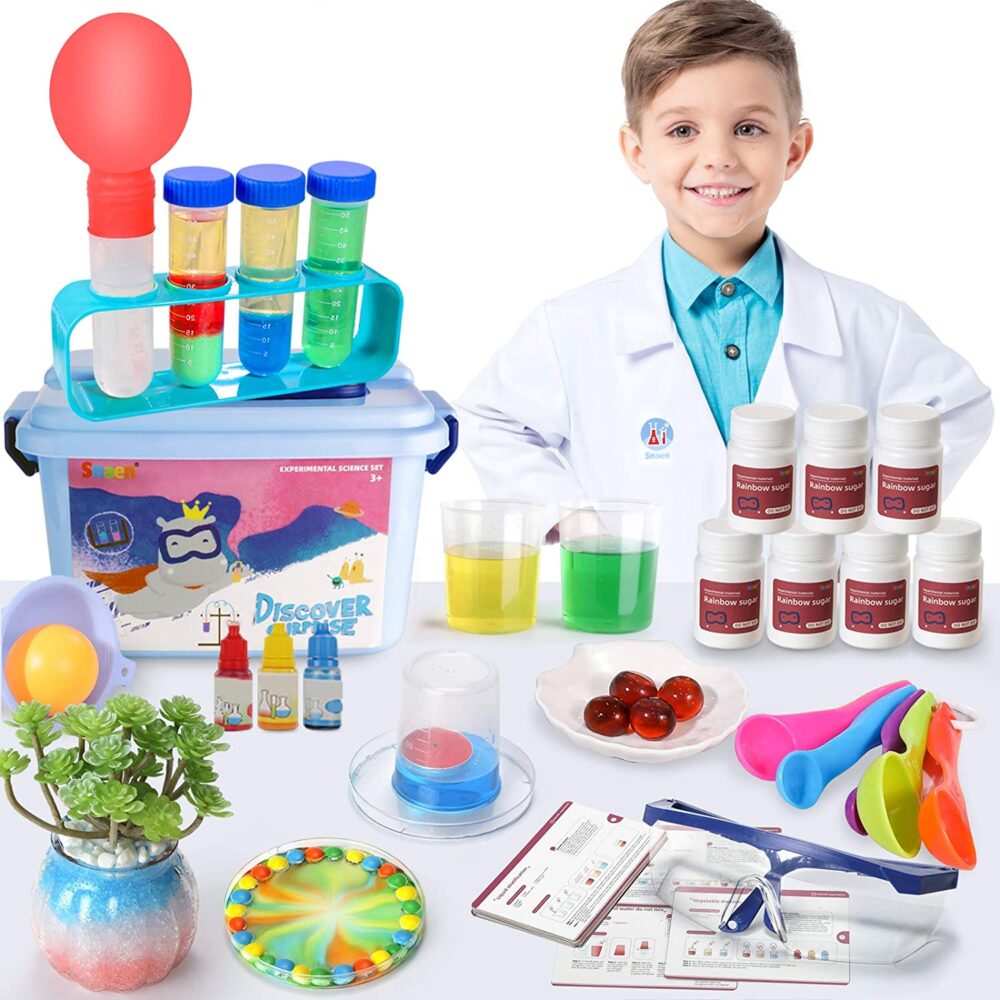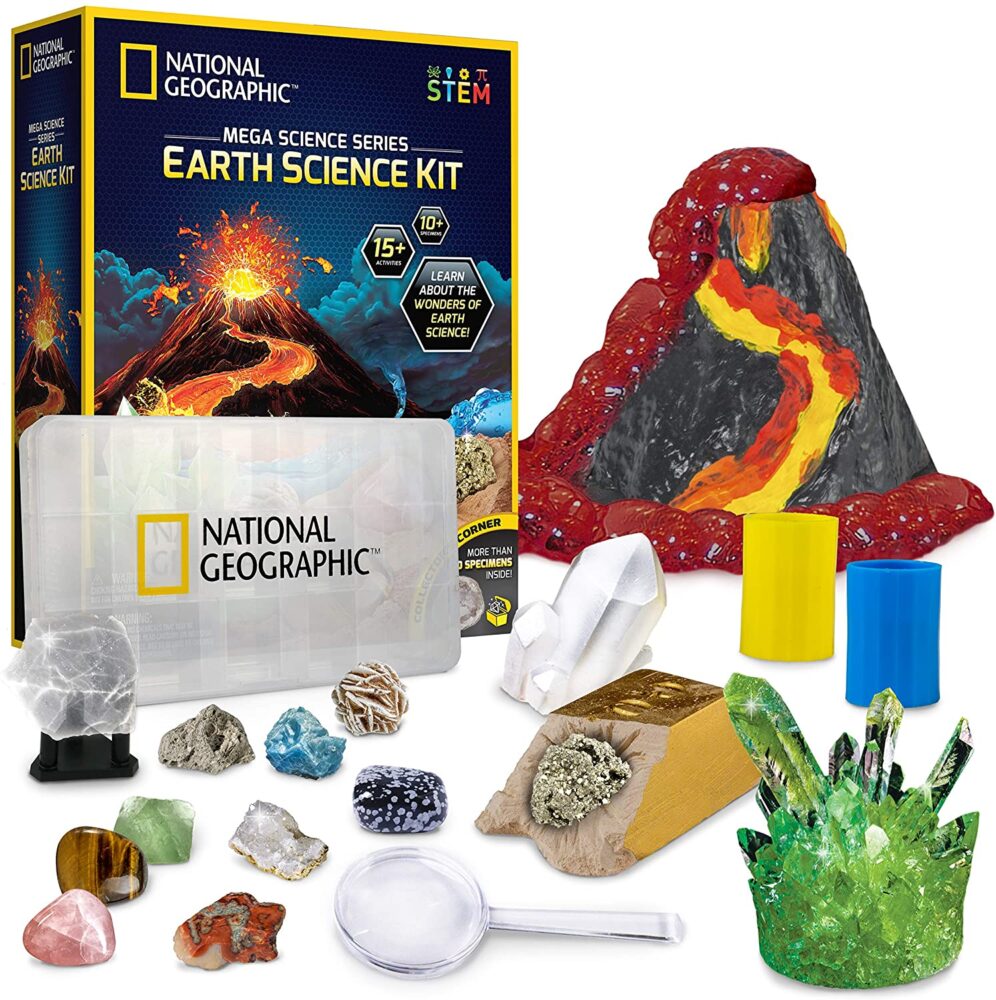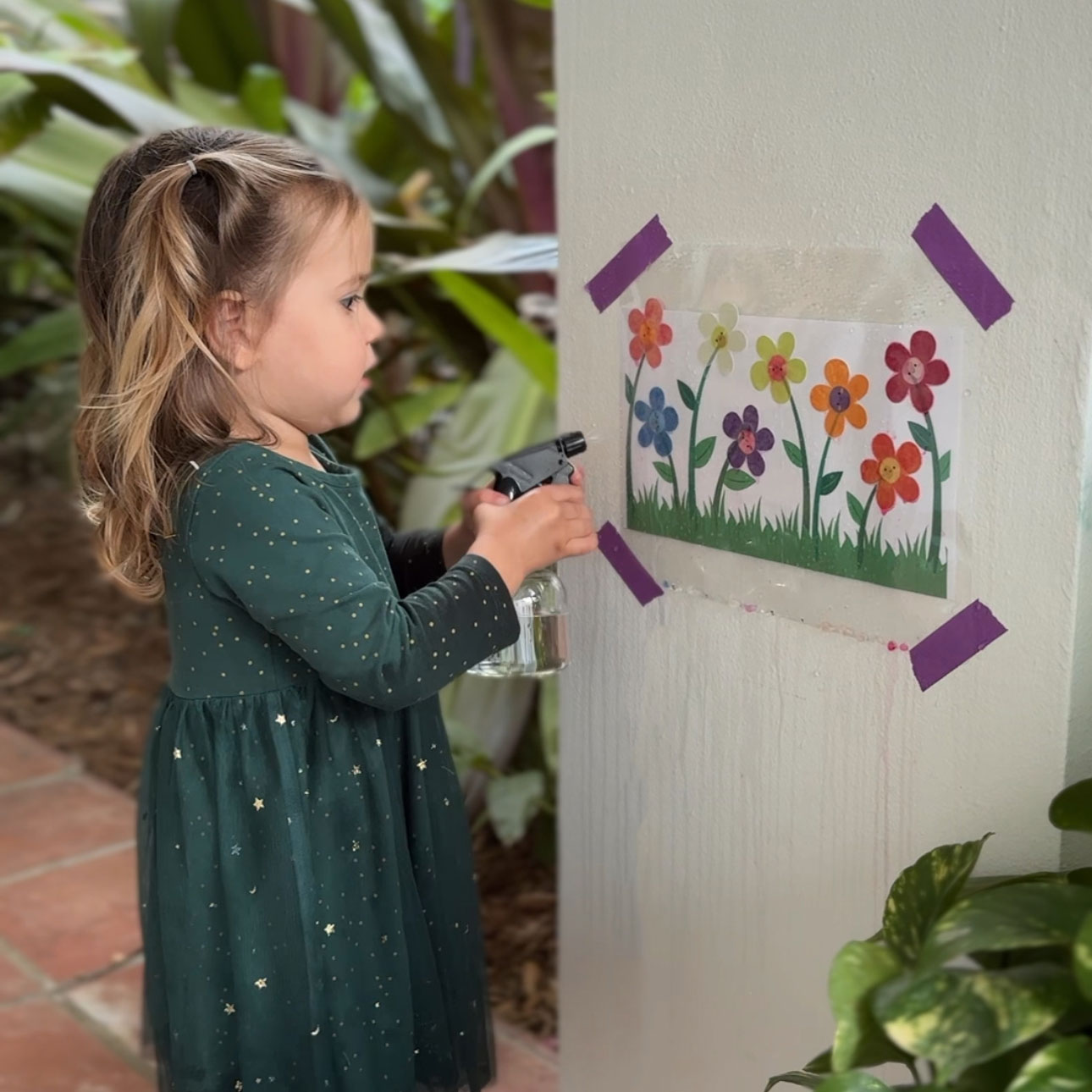Elephant Toothpaste for Kids – Super Fun and Foamy
Are you looking for a super fun activity that is all about chemical reactions? This Elephant Toothpaste for kids experiment is an exciting way to explore what happens when hydrogen peroxide and yeast combine! Read on below to understand the different ways you can conduct this experiment based on age and hydrogen peroxide strength!
Kitchen Science for Young Kids
There is nothing better than being able to use materials you already have! Talk about budget-friendly! The most simple way to conduct this experiment involves using 3% hydrogen peroxide – readily available and likely already in your cupboard! For preschoolers, this is the safest type of hydrogen peroxide to use, but the chemical reaction is the weakest compared to higher strengths of hydrogen peroxide. In the videos below, you can see what the elephant toothpaste for kids experiment looks like using 3% hyrodgen peroxide verus 6% hyrodgen peroxide.
For more simple science experiments you can do with kids, be sure to explore our full list of science activities!
Elephant Toothpaste for Kids Experiment with 3% Hydrogen Peroxide
In this video, 3% hydrogen peroxide is used. This is the most readily available type of hyrodgen peroxide – available at pharmacies as an antiseptic for scraps and cuts. It is the weakest concentration hyrodgen peroxide you can buy and, in turn, will create the weakest reaction compared to higher strength hydrogen peroxide. That being said, it is the safest version of this experiment and is still a really fun reaction for young kids.
Elephant Toothpaste for Kids Experiment with 3% Hydrogen Peroxide
In this video, 3% hydrogen peroxide is used. This is the most readily available type of hyrodgen peroxide – available at pharmacies as an antiseptic for scraps and cuts. It is the weakest concentration hyrodgen peroxide you can buy and, in turn, will create the weakest reaction compared to higher strength hydrogen peroxide. That being said, it is the safest version of this experiment and is still a really fun reaction for young kids.
Elephant Toothpaste for Kids Experiment with 12% Hydrodgen Peroxide
In this version of the experiment we used a higher percentage of hydrogen peroxide. This type of food grade version of hydrogen peroxide is typically used for hair bleaching, teeth whitening, food sterilization, and laundry, to name a few. It is available at some beauty shops and various online stores. It provides for a stronger chemical reaction than 3% hydrogen peroxide, but is still relatively safe for young kids to observe. I did not allow my children to actually pour the hydrogen peroxide, but I did allow them to pour the yeast mixture into it and observe the full reaction. The chemical reaction does get hotter than using 3% so children should refrain from touching the foamy mixture until it cools.
Elephant Toothpaste for Kids Experiment with 12% Hydrodgen Peroxide
In this version of the experiment we used a higher percentage of hydrogen peroxide. This type of food grade version of hydrogen peroxide is typically used for hair bleaching, teeth whitening, food sterilization, and laundry, to name a few. It is available at some beauty shops and various online stores. It provides for a stronger chemical reaction than 3% hydrogen peroxide, but is still relatively safe for young kids to observe. I did not allow my children to actually pour the hydrogen peroxide, but I did allow them to pour the yeast mixture into it and observe the full reaction.
The chemical reaction does get hotter than using 3% so children should refrain from touching the foamy mixture until it cools.
How To Make Your Own Elephant Toothpaste
The kids will love learning all about how chemical reactions occur! There are several choices you have to make prior to conducting the experiment. For example, what strength hydrogen peroxide will you use? Hydrogen peroxide is available in 3%, 6%, 12%, 30% and 35%. The higher the percentage, the stronger the reaction and the hotter the mixture will heat up.
You can also decide whether you want to add a pop of color to the experiment! The name elephant toothpaste came from the fact that the foamy mixture looked like elephant-size toothpaste especially if blue and red food coloring were added on the sides! My kids really enjoyed setting up 6 different containers, each with a different color! Even without coloring, this experiment is very fun!
This does require adult supervision as the foam can be hot and needs to cool. Also, be sure to wear protective glasses and gloves. Even if the mixture doesn’t get too hot, this is excellent practice for kids to get comfortable wearing protective gear. All activities should be supervised by an adult. As an Amazon Associate I earn from qualifying purchases. This post may contain affiliate links.
Materials
- Water
- Cylinders, or other narrow container
- Kid-Sized Gloves
- Protective Goggles
- 12% Hydrogen Peroxide or 3% Hydrogen Peroxide
- Liquid Watercolor or Food Coloring
- Dish Soap
- Active Dry Yeast
- Water
- Cylinders, or other narrow container
- Kid-Sized Gloves
- Protective Goggles
Step-by-Step Instructions
Step 1
In a small container, mix 1/4 cup hydrogen peroxide, a big squirt of dish soap (about 1/4 of a cup), and one tablespoon liquid watercolor.
Step 2
In a separate small bowl, dissolve 1/2 teaspoon of active dry yeast in 1 tablespoon of warm water.
Step 3
Add the yeast mixture to the container for the most colorful, creamy chemical reaction! It will likely foam over your container so be sure to have a tray underneath to avoid too much mess. Once the mixture has cooled, it is safe to touch and explore as an added sensory experience!
Step 1
In a small container, mix 1/4 cup hydrogen peroxide, a big squirt of dish soap (about 1/4 of a cup), and one tablespoon liquid watercolor.
Step 2
In a separate small bowl, dissolve 1/2 teaspoon of active dry yeast in 1 tablespoon of warm water.
Step 3
Add the yeast mixture to the container for the most colorful, creamy chemical reaction! It will likely foam over your container so be sure to have a tray underneath to avoid too much mess. Once the mixture has cooled, it is safe to touch and explore as an added sensory experience!
The Science Behind This Elephant Toothpaste for Kids Experiment
When hydrogen peroxide comes in contact with the yeast mixture, the yeast acts as a catalyst, and a chemical reaction occurs, causing it to break down into oxygen (02) and water (H20). Putting in the dish soap causes the gas to get trapped into bubbles which then creates the foam. The kids might think it’s “magic” at first, but it’s a fun way to talk to them about this scientific process.
Once your child learns how chemical reactions are formed, they can then use this information to find safe new ways to create more fun fizz, foamy activities!
Again, this experiment can also be changed up easily by changing the percentages of hydrogen peroxide used – the more significant the percentage, the bigger the reaction.
The Science Behind This Elephant Toothpaste for Kids Experiment
When hydrogen peroxide comes in contact with the yeast mixture, the yeast acts as a catalyst, and a chemical reaction occurs, causing it to break down into oxygen (02) and water (H20). Putting in the dish soap causes the gas to get trapped into bubbles which then creates the foam. The kids might think it’s “magic” at first, but it’s a fun way to talk to them about this scientific process.
Once your child learns how chemical reactions are formed, they can then use this information to find safe new ways to create more fun fizz, foamy activities!
Again, this experiment can also be changed up easily by changing the percentages of hydrogen peroxide used – the more significant the percentage, the bigger the reaction.
More Ways to Explore Chemical Reactions
Here are my top picks for science experiment kits!
This science kit for kids includes 30 scientific experiments plus fun gear like a lab coat, goggles, and other scientific equipment!
This 3-Pack Chemistry Kits will ignite a passion for science. Including an electrochemistry lab, fire lab, and vortex lab.
This kit lets your children learn hands-on about geology and chemical reactions in volcanoes.
Create glowing slime, fizzing reactions, oozing bubbles, colorful chromatography, and more!
What’s Next?
Number Recognition for Toddlers – The Best Activity to Start Learning
Kickstart number recognition for toddlers with this beginner’s activity! Fill bubble outlines with pom poms for engaging hands-on learning.
Flower Activity for Preschoolers with Free Printable!
This flower activity is a fun way to learn about how flowers bloom while also strengthening fine motor skills while using a spray bottle!
The Best Fun Outdoor Toys for Kids in 2024
Explore fun outdoor toys for kids in 2024! From sandboxes to water toys, bikes, games, and more. Keep your kids entertained all year long!










